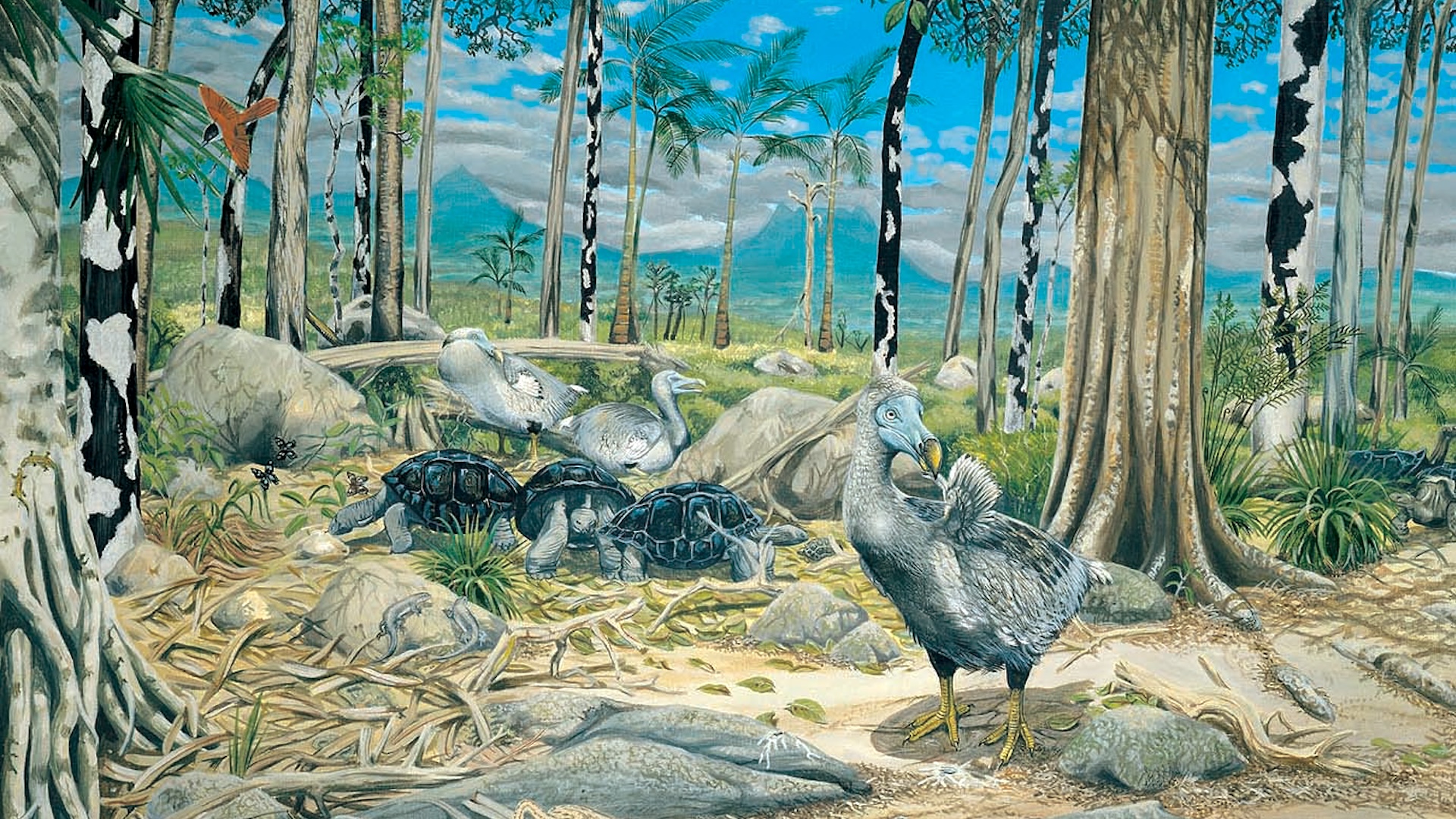
The dodo, a bird that humans hunted to extinction in the 1600s, wasn't the slow, clueless ball of feathers that has been depicted in popular culture.
By poring through early records and descriptions of the dodo and a related species called the solitaire, researchers cleared up misconceptions about the iconic creatures. It turns out, the vanished birds were powerful and speedy, according to a study published Aug. 14 in the Zoological Journal of the Linnean Society.
"Was the Dodo really the dumb, slow animal we've been brought up to believe it was? The few written accounts of live Dodos say it was a fast-moving animal that loved the forest," study author Mark Young, a researcher and professor at the University of Southampton in the U.K., said in a statement.
The dodo (Raphus cucullatus) was the first recorded extinction directly caused by humans and witnessed in real time. When Dutch sailors arrived on Mauritius in 1598, it was teeming with adorably chubby, flightless birds that stood about 3 feet tall (1 meter) and weighed about 45 pounds (20 kilograms), according to the Oxford University Museum of Natural History (OUMNH) in the U.K. As the Dutch colonized the island, they introduced predatory invasive species, chopped down forests, destroyed the dodos' nests and hunted the birds rapaciously. Less than 70 years later, the species was extinct; the last known sighting was in 1662, according to the OUMNH.
For centuries, the dodo has been used as an evolutionary cautionary tale, its name synonymous with ineptness. With no known predators on Mauritius, the story went, the dodo grew large and lost its ability to fly. Its lack of predators also made it too trusting of the new human hunters that had arrived on the island.
Part of the problem is that scientists weren't actually clear about which dodo species actually existed, with several mythological birds being described in early literature, according to the statement. Records of the birds were confusing, inconsistent and unreliable.

To clear that up, the study authors tracked down early specimens, reports of seeing live creatures and early taxonomic descriptions of the species, and sorted fact from fiction. They found that while many species, such as the Nazarene dodo, were fictional, the solitaire (Pezophaps solitaria) — a species that's closely related to the dodo and that some thought was mythological — actually existed and lived on the Mauritian island of Rodrigues.
Get the world’s most fascinating discoveries delivered straight to your inbox.
They also identified an iconic "type specimen" for the dodo — meaning the single preserved specimen that serves as the reference for the species. Using that, they determined that both the dodo and the solitaire were members of the family that includes pigeons and doves.
Using that type specimen, the team also looked at what dodos were actually like, clearing up popular misconceptions about the iconic birds.
"Evidence from bone specimens suggests that the Dodo's tendon which closed its toes was exceptionally powerful, analogous to [those of] climbing and running birds alive today," study co-author Neil Gostling, an evolutionary biologist at the University of Southampton in the U.K., said in the statement. "These creatures were perfectly adapted to their environment."
Understanding the dodo's characteristics and behavior may clarify the role it played in its ecosystem and could even help protect existing endangered birds, the study authors said in the statement.
While the dodo is currently extinct, that may not be true for long. Scientists with Colossal Biosciences are trying to bring back the iconic flightless birds, which they hope to reintroduce to Mauritius to stabilize the ecosystem. The same company is trying to bring back the woolly mammoth.

Tia is the editor-in-chief (premium) and was formerly managing editor and senior writer for Live Science. Her work has appeared in Scientific American, Wired.com, Science News and other outlets. She holds a master's degree in bioengineering from the University of Washington, a graduate certificate in science writing from UC Santa Cruz and a bachelor's degree in mechanical engineering from the University of Texas at Austin. Tia was part of a team at the Milwaukee Journal Sentinel that published the Empty Cradles series on preterm births, which won multiple awards, including the 2012 Casey Medal for Meritorious Journalism.


